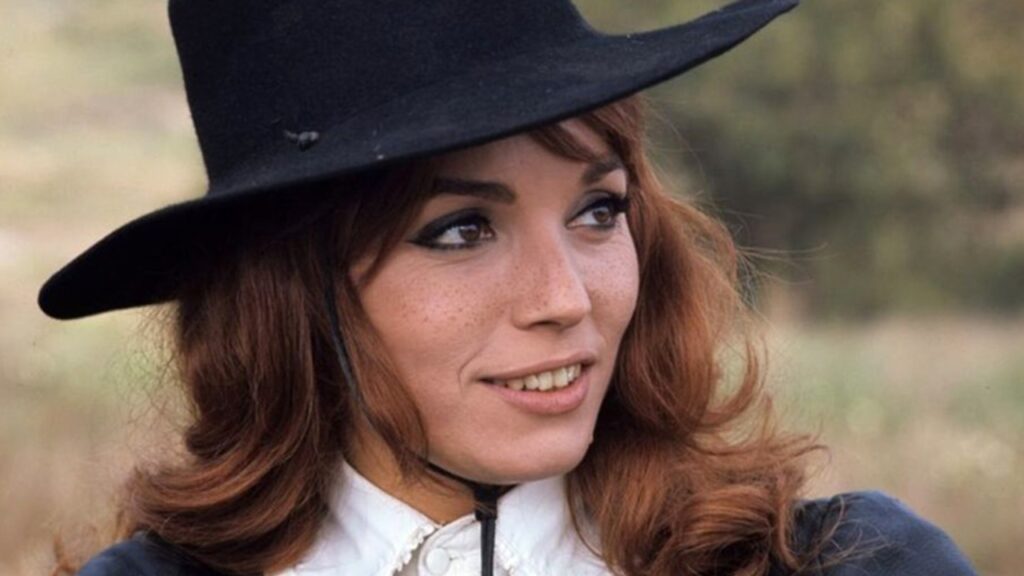
The Belle Starr Story (1968) is an early directorial effort from Lina Wertmüller before she found international success in the mid-seventies. This relatively early effort (which she directed under the pseudonym Nathan Wich) is historically significant as the only Italian western to be directed by a woman. Wertmüller took over the production of this less than historically accurate western just days into the shoot, allegedly reworking large parts of the script and revising the overall tone of the piece.
The Belle Starr Story sees Wertmüller subverting and playing with the patriarchal frameworks that have traditionally defined the western genre. Belle Starr (Elsa Martinelli) is depicted as a “tom boy”; she wears men’s clothing and smokes cigars. Belle Starr echoes Vienna of Johnny Guitar (1954) and Jessica Dummond of Forty Guns (1957) is both posture and attitude. But Belle Starr is the product of the sixties and Wertmüller pits her heroine against rapists, misogynists and other opponents that, for the most part, existed only in the subtext of these earlier films. The Belle Starr Story is a film about active resistance.
The film opens with Belle Starr playing poker with Larry Blackie (George Eastman). Belle Starr loses all her previous winnings so she wages herself sexually. The dynamic between the two is born out of the western economy of romance where assault and submission form the core of any sexual relationship. Wertmüller plays with this trope skillfully. First she intercuts flashbacks to establish Belle Starr’s sexual traumas and then Wertmüller ends the scene with a bit of dialogue that establishes a quasi-consensual kind of rough kink. Wertmüller is totally subtle in this and uses it to establish the volatile relationship between Starr and Blackie that manifests itself as a game of one-upmanship.
Later in the film Belle Starr and Blackie meet again. Blackie inquires about Starr’s past and in a moment of vulnerability and compassion offers the sentiment “we all hide our true selves behind our guns”. A moment of potential sexual chemistry is instantly diffused and the rough and ready gunslinger is remolded as a sensitive survivor commiserating with a fellow victim. It is at this juncture that Wertmüller transitions the film into a series of flashbacks that describe Belle Starr’s origins.
The flashbacks pit Belle Starr against the patriarchal constructs of the father and the lover. In each instance a complacent Belle Starr becomes disillusioned with a man and rebels against his authority, resulting in his demise. Wertmüller casts her heroine as a proto-feminist avenging angel for the women of the west.
The nature of the narratives in these flashbacks recall the more standard motifs of the western genre but realigned to accommodate a female perspective. Usually the origin story flashback shows the hero’s life being shattered with some iteration of the nuclear family being violently taken away. In The Belle Starr Story this motif is inverted so the protagonist must destroy a social construct to create a new one or simply to assert independence.
Yet all of Wertmüller’s subversions do not totally dismantle the western genre; rather Wertmüller tests the limitations of the genre. When Wertmüller isn’t actively opposing the social politics of the western and is dealing with blocking gunfights and card games that The Belle Starr Story begins to flounder. The requisite action spectacles of a western do not seem to interest Wertmüller much so it is these portions of the film that either drag or are simply incomprehensible.
The Belle Starr Story neither re-writes the western nor does it offer any great insight into the later masterpieces that Lina Wertmüller would direct. What The Belle Starr Story does do is provide a glimpse into an alternate vein of genre filmmaking where the female perspective is essential. Italian westerns in particular have always been hostile to women so a film like The Belle Starr Story is an essential document.
